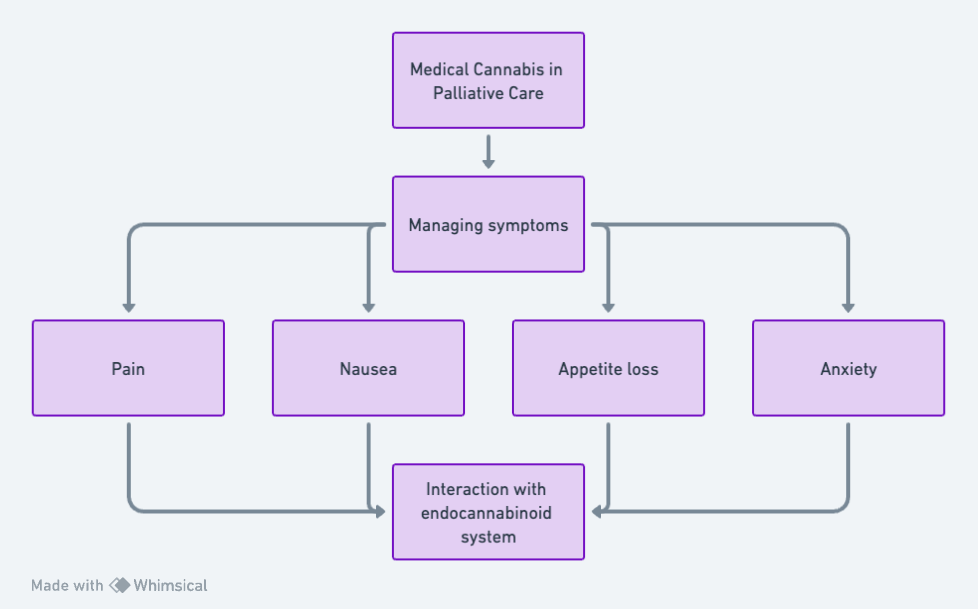
Medical Cannabis in Palliative Care for Infectious Diseases
Extensive Review of Applications
Medical cannabis has a burgeoning role in palliative care, particularly in managing symptoms such as pain, nausea, appetite loss, anxiety, and depression. Despite its potential benefits, medical cannabis remains underutilized and poorly understood in the context of palliative care.
Pain Control
Cannabis, particularly CBD and THC, has shown promise in pain management. Both compounds interact with the endocannabinoid system, reducing inflammation and modulating pain signals1.
Nausea and Appetite Loss
Cannabinoids can be particularly effective in combating nausea and vomiting, often side effects of chemotherapy or antiretroviral therapies. THC stimulates the appetite by interacting with CB1 receptors in the brain2.
Anxiety and Depression
CBD has shown promise as an anxiolytic and antidepressant by modulating serotonin levels3.
Lack of Awareness
In recent history, most clinicians in palliative care are unaware of the potential benefits of cannabis-based treatments. This results in a scenario where patients self-experiment, risking adverse effects at a vulnerable time. The expertise of medical providers like Dr. Caplan at CED Clinic can guide patients to safer, more effective symptom management.
Comparison Table
| Symptom | Mechanism of Action | Best Suited Formulations | Duration in Body |
|---|---|---|---|
| Pain | Anti-inflammatory, analgesic | Oral, Inhalation, Topical | 2-6 hours |
| Nausea | Anti-emetic | Oral, Sublingual | 4-8 hours |
| Appetite Loss | Stimulation of CB1 receptors | Oral, Inhalation | 2-6 hours |
| Anxiety | Serotonin modulation | Sublingual, Oral | 4-8 hours |
| Depression | Serotonin modulation | Sublingual, Oral | 4-8 hours |
Precautionary Note
Patients with the following conditions should consult Dr. Caplan at CED Clinic for more specialized, evidence-based guidance:
- Cardiovascular diseases
- Liver disorders
- Pregnancy and breastfeeding
- History of substance abuse
References
- Russo, E. B. (2016). Cannabinoids in the management of difficult to treat pain. Therapeutics and Clinical Risk Management, 4, 245-259.
- Parker, L. A., et al. (2015). Regulation of nausea and vomiting by cannabinoids. British Journal of Pharmacology, 163, 1411–1422.
- Blessing, E. M., et al. (2015). Cannabidiol as a Potential Treatment for Anxiety Disorders. Neurotherapeutics, 12(4), 825–836.
📗 Note: This diagram’s your first chord; the book’s your rock anthem. Strum along by clicking here 📗



